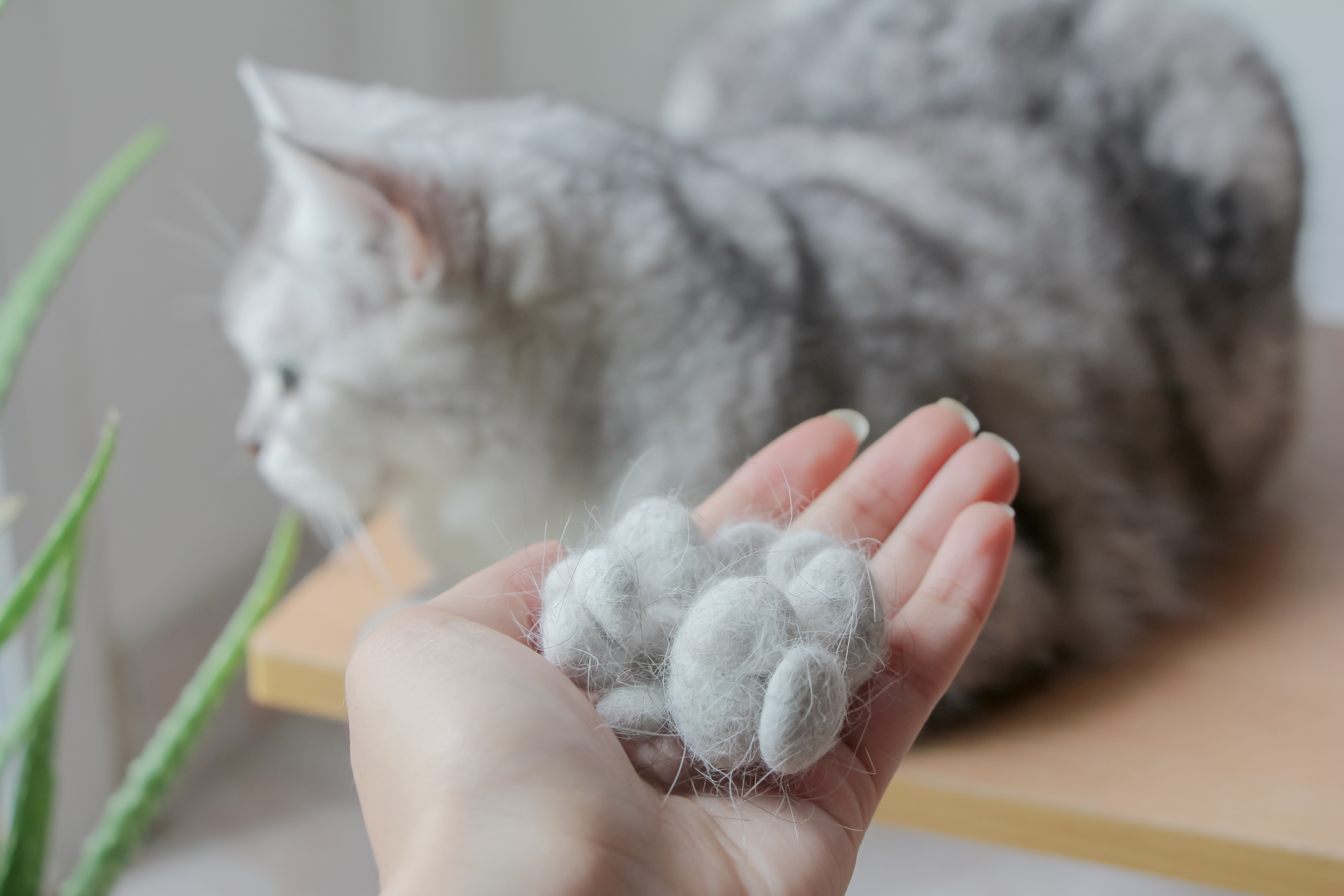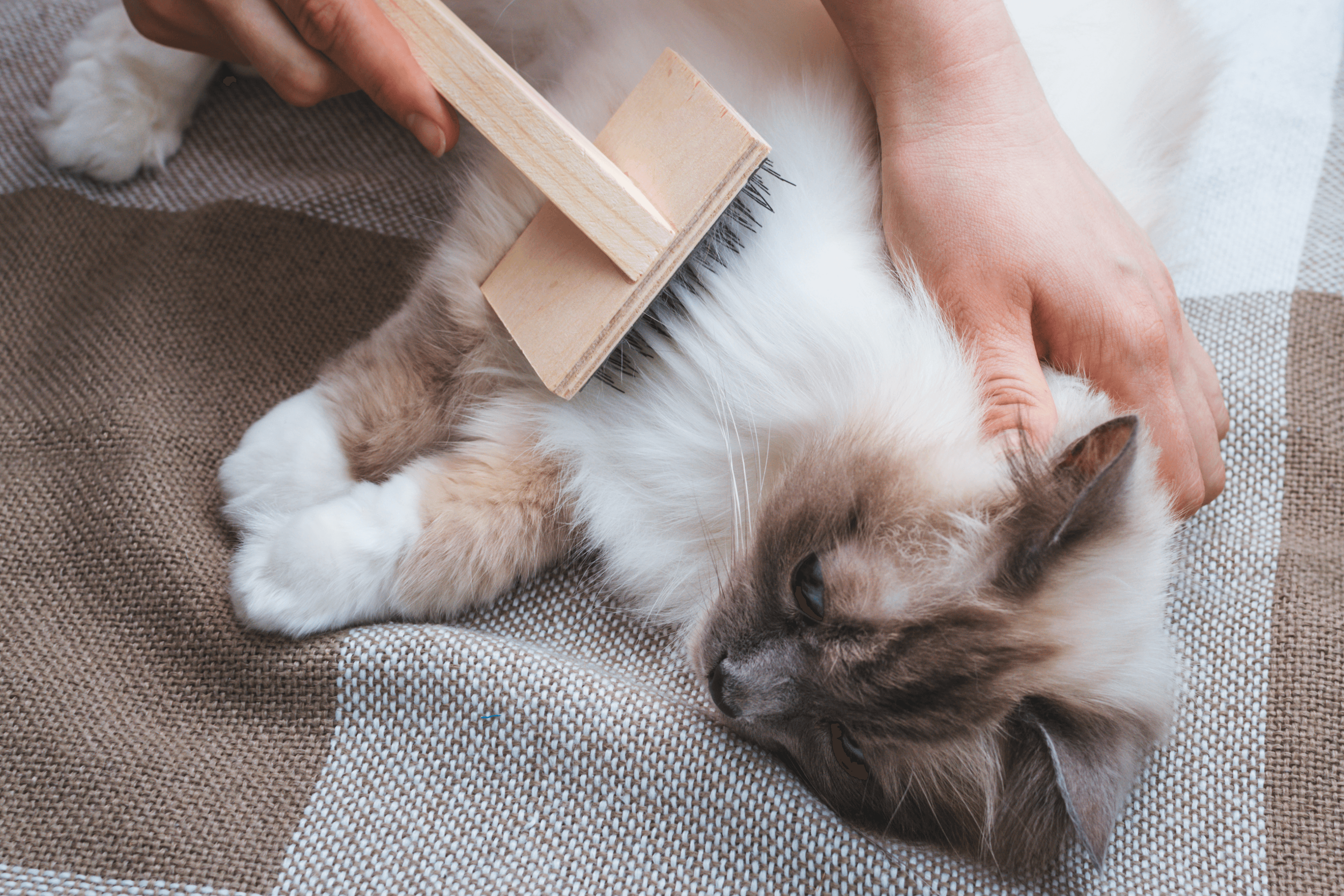As the spring season arrives, cat owners face a common issue: spring shedding. With the change in weather, cats shed their winter coats, resulting in a lot of fur. Although shedding is natural, it can quickly fill your home with cat hair if not appropriately handled. To keep your cat's hair under control, here are some solutions to manage your cat's shedding.
Manage Cat Spring Shedding with these Tips

1. Regular Grooming Sessions
Establishing a grooming routine for your cat during the spring season is important. Regular brushing of your cat's coat not only removes loose fur but also helps distribute natural oils, keeping its coat healthy and shiny. Depending on your cat's coat type, choose a grooming tool that suits them best, such as a slicker brush, grooming glove, or de-shedding comb.
2. Balanced Diet and Supplementation
A nutritious and well-balanced diet is necessary for maintaining your cat's skin and coat health. Provide high-quality food containing essential fatty acids like omega-3 and omega-6, promoting skin health and reducing excessive shedding. You can also consider incorporating fish oil or specialized skin and coat supplements into your cat's diet to promote a healthy coat and minimize shedding. However, before introducing new supplements, consulting your vet is always advisable.
3. Hydration
Maintaining proper hydration is vital to keep healthy skin and coat for your cat. Access to fresh water every day helps to avoid dehydration and keep their coat healthy.
4. Regular Vet Check-ups
Schedule routine check-ups with your trusted veterinarian to monitor your cat's overall health, including their skin and coat condition. Your vet can tell you of any underlying health issues contributing to excessive shedding, such as allergies, parasites, or hormonal imbalances, and provide appropriate treatment.
5. Environmental Control
It's important to keep your home clean and well-ventilated to minimize indoor allergens and irritants. To reduce airborne allergens, vacuum regularly, wash beddings, and use air purifiers. These tips can help keep your cat feel more comfortable during shedding season.
6. Hair-Friendly Furniture
Consider investing in furniture and accessories that are cat-friendly and designed to minimize the accumulation of cat hair. Opt for washable covers for couches and beds, and provide your cat with designated scratching posts and beds to redirect their shedding behavior.
7. Stress Reduction
Stress can make your cat shed more. Create an engaging environment by providing enough play, exercise, and mental stimulation opportunities. You can also establish a consistent routine and create hiding spots and vertical spaces to help reduce stress and minimize shedding.
Understanding the Shedding Cycle

Cats naturally shed their old or damaged hair to allow new hair growth. The shedding cycle is affected by breed, age, and overall health. Cats usually have two shedding seasons - spring and fall. Cats shed their winter coats during spring to adjust to the warmer weather.
Shedding helps regulate a cat's body temperature and keeps them comfortable. Furthermore, the increase in daylight hours induces hormonal changes in cats, leading to a heavier shedding cycle during spring. Therefore, if you find your house covered in cat hair during these months, it's completely normal!
What months do cats shed the most?
Cats shed the most during the spring and fall as they prepare for temperature changes. However, indoor cats may shed more consistently throughout the year due to artificial lighting and temperature control.
Do cats clean themselves more in the spring?
During spring, cats tend to groom themselves more often as they shed their winter coats and prepare for warmer weather. This increased grooming helps remove loose fur and facilitates the transition to a lighter coat.
Why is my cat shedding in summer?
During summer, your cats may still shed some fur, especially if they spend time outdoors or the temperature inside your home is high. Shedding is natural and helps regulate body temperature and remove excess fur, which helps keep your cat comfortable during hot weather.
Why is my cat abnormally shedding?
Excessive shedding or bald patches in your cat's coat may indicate underlying health issues such as allergies, parasites, hormonal imbalances, or skin infections. If you observe these symptoms, seek advice from your veterinarian for examination and proper treatments.
By understanding your cat's shedding patterns and implementing these strategies, you can effectively manage shedding season and promote a healthy coat and fur for your cat throughout the year.





















